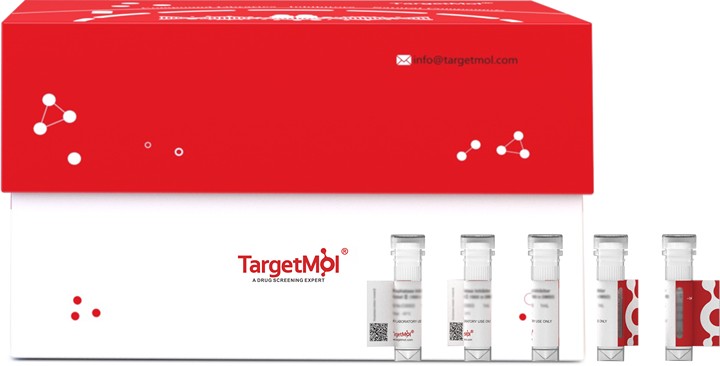- Remove All
 Your shopping cart is currently empty
Your shopping cart is currently empty
OMA1 Protein, Human, Recombinant (His & SUMO)
Metalloprotease that is part of the quality control system in the inner membrane of mitochondria. Activated in response to various mitochondrial stress, leading to the proteolytic cleavage of target proteins, such as OPA1, UQCC3 and DELE1. Following stress conditions that induce loss of mitochondrial membrane potential, mediates cleavage of OPA1 at S1 position, leading to OPA1 inactivation and negative regulation of mitochondrial fusion. Also acts as a regulator of apoptosis: upon BAK and BAX aggregation, mediates cleavage of OPA1, leading to the remodeling of mitochondrial cristae and allowing the release of cytochrome c from mitochondrial cristae. In depolarized mitochondria, may also act as a backup protease for PINK1 by mediating PINK1 cleavage and promoting its subsequent degradation by the proteasome. May also cleave UQCC3 in response to mitochondrial depolarization. Also acts as an activator of the integrated stress response (ISR): in response to mitochondrial stress, mediates cleavage of DELE1 to generate the processed form of DELE1 (S-DELE1), which translocates to the cytosol and activates EIF2AK1/HRI to trigger the ISR. Its role in mitochondrial quality control is essential for regulating lipid metabolism as well as to maintain body temperature and energy expenditure under cold-stress conditions. Binds cardiolipin, possibly regulating its protein turnover. Required for the stability of the respiratory supercomplexes.

OMA1 Protein, Human, Recombinant (His & SUMO)
| Pack Size | Price | Availability | Quantity |
|---|---|---|---|
| 20 μg | $1,500 | 20 days | |
| 100 μg | $2,750 | 20 days |
Product Information
| Biological Activity | Measured by its binding ability in a functional ELISA. Immobilized OMA1 at 5 μg/mL can bind human BZW2, the EC50 of human BZM2 is 45.42-72.22 μg/mL. |
| Description | Metalloprotease that is part of the quality control system in the inner membrane of mitochondria. Activated in response to various mitochondrial stress, leading to the proteolytic cleavage of target proteins, such as OPA1, UQCC3 and DELE1. Following stress conditions that induce loss of mitochondrial membrane potential, mediates cleavage of OPA1 at S1 position, leading to OPA1 inactivation and negative regulation of mitochondrial fusion. Also acts as a regulator of apoptosis: upon BAK and BAX aggregation, mediates cleavage of OPA1, leading to the remodeling of mitochondrial cristae and allowing the release of cytochrome c from mitochondrial cristae. In depolarized mitochondria, may also act as a backup protease for PINK1 by mediating PINK1 cleavage and promoting its subsequent degradation by the proteasome. May also cleave UQCC3 in response to mitochondrial depolarization. Also acts as an activator of the integrated stress response (ISR): in response to mitochondrial stress, mediates cleavage of DELE1 to generate the processed form of DELE1 (S-DELE1), which translocates to the cytosol and activates EIF2AK1/HRI to trigger the ISR. Its role in mitochondrial quality control is essential for regulating lipid metabolism as well as to maintain body temperature and energy expenditure under cold-stress conditions. Binds cardiolipin, possibly regulating its protein turnover. Required for the stability of the respiratory supercomplexes. |
| Species | Human |
| Expression System | E. coli |
| Tag | N-6xHis-SUMO |
| Accession Number | Q96E52 |
| Amino Acid | HVFFRFNSLSNWRKCNTLASTSRGCHQVQVNHIVNKYQGLGVNQCDRWSFLPGNFHFYSTFNNKRTGGLSSTKSKEIWRITSKCTVWNDAFSRQLLIKEVTAVPSLSVLHPLSPASIRAIRNFHTSPRFQAAPVPLLLMILKPVQKLFAIIVGRGIRKWWQALPPNKKEVVKENIRKNKWKLFLGLSSFGLLFVVFYFTHLEVSPITGRSKLLLLGKEQFRLLSELEYEAWMEEFKNDMLTEKDARYLAVKEVLCHLIECNKDVPGISQINWVIHVVDSPIINAFVLPNGQMFVFTGFLNSVTDIHQLSFLLGHEIAHAVLGHAAEKAGMVHLLDFLGMIFLTMIWAICPRDSLALLCQWIQSKLQEYMFNRPYSRKLEAEADKIGLLLAAKACADIRASSVFWQQMEFVDSLHGQPKMPEWLSTHPSHGNRVEYLDRLIPQALKIREMCNCPPLSNPDPRLLFKLSTKHFLEESEKEDLNITKKQKMDTLPIQKQEQIPLTYIVEKRTGS |
| Construction | 14-524 aa |
| Protein Purity | > 90% as determined by SDS-PAGE. |
| Molecular Weight | 74.7 kDa (predicted) |
| Endotoxin | < 1.0 EU/μg of the protein as determined by the LAL method. |
| Formulation | Tris-based buffer, 50% glycerol |
| Reconstitution | A Certificate of Analysis (CoA) containing reconstitution instructions is included with the products. Please refer to the CoA for detailed information. |
| Stability & Storage | Lyophilized powders can be stably stored for over 12 months, while liquid products can be stored for 6-12 months at -80°C. For reconstituted protein solutions, the solution can be stored at -20°C to -80°C for at least 3 months. Please avoid multiple freeze-thaw cycles and store products in aliquots. |
| Shipping | In general, Lyophilized powders are shipping with blue ice. Solutions are shipping with dry ice. |
| Research Background | Metalloprotease that is part of the quality control system in the inner membrane of mitochondria. Activated in response to various mitochondrial stress, leading to the proteolytic cleavage of target proteins, such as OPA1, UQCC3 and DELE1. Following stress conditions that induce loss of mitochondrial membrane potential, mediates cleavage of OPA1 at S1 position, leading to OPA1 inactivation and negative regulation of mitochondrial fusion. Also acts as a regulator of apoptosis: upon BAK and BAX aggregation, mediates cleavage of OPA1, leading to the remodeling of mitochondrial cristae and allowing the release of cytochrome c from mitochondrial cristae. In depolarized mitochondria, may also act as a backup protease for PINK1 by mediating PINK1 cleavage and promoting its subsequent degradation by the proteasome. May also cleave UQCC3 in response to mitochondrial depolarization. Also acts as an activator of the integrated stress response (ISR): in response to mitochondrial stress, mediates cleavage of DELE1 to generate the processed form of DELE1 (S-DELE1), which translocates to the cytosol and activates EIF2AK1/HRI to trigger the ISR. Its role in mitochondrial quality control is essential for regulating lipid metabolism as well as to maintain body temperature and energy expenditure under cold-stress conditions. Binds cardiolipin, possibly regulating its protein turnover. Required for the stability of the respiratory supercomplexes. |
Dose Conversion
Calculator
Tech Support
Keywords

Copyright © 2015-2025 TargetMol Chemicals Inc. All Rights Reserved.


